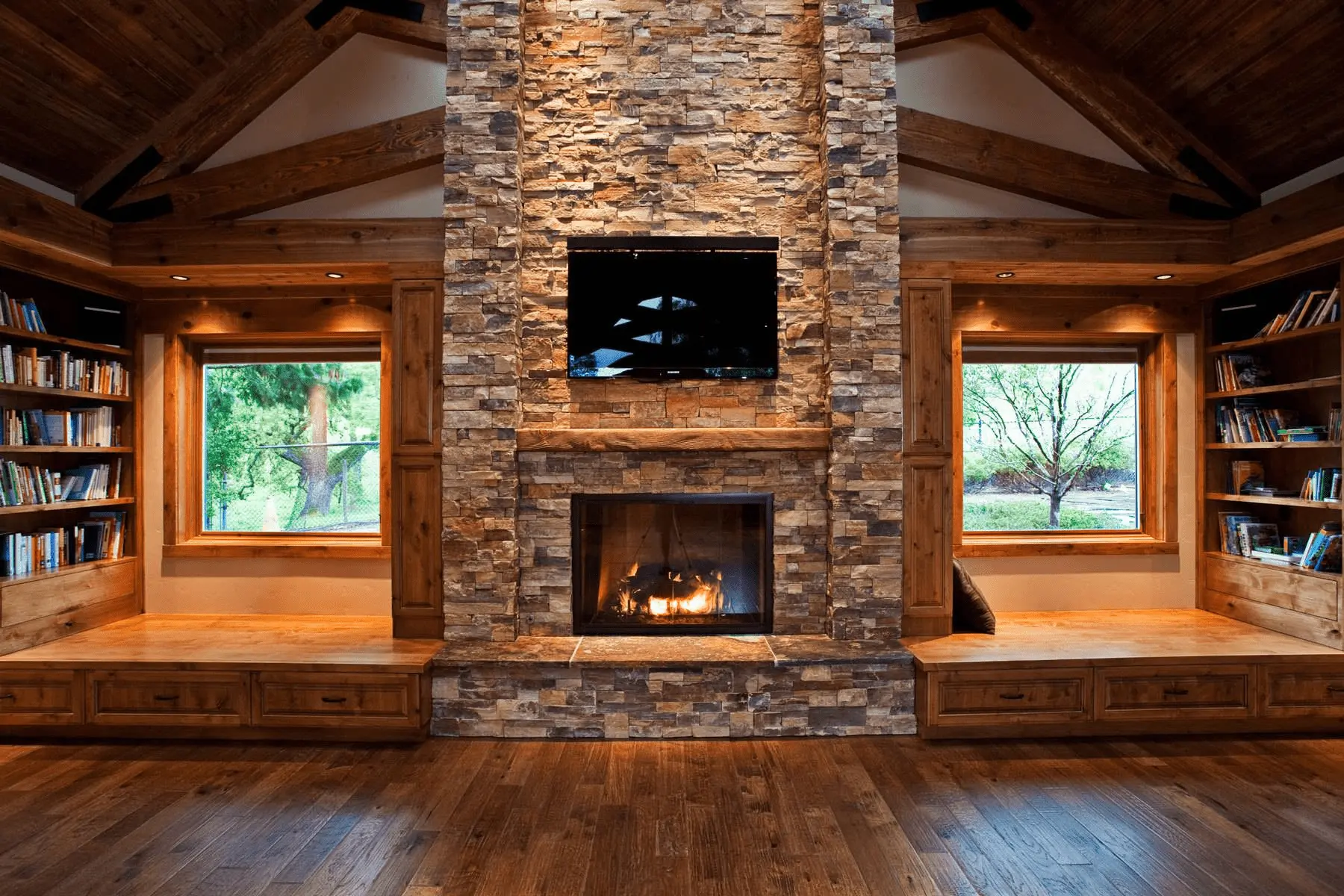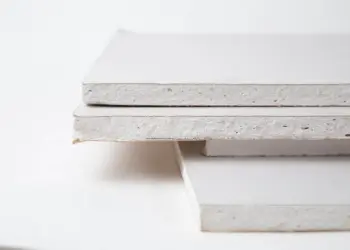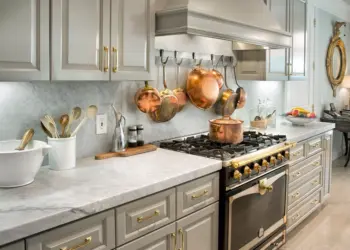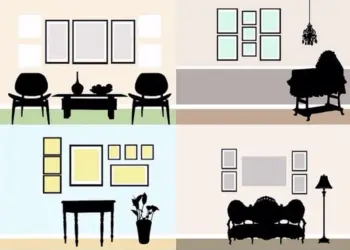Fireplaces serve as the heart of many homes, and an eye-catching design can elevate the entire living space. One trending transformation gaining popularity is replacing traditional tiles around the fireplace with natural stones that extend all the way to the ceiling. In this article, we’ll delve into all aspects of this exciting upgrade, from the benefits of choosing stones over tiles to a step-by-step guide on the replacement process.
Table of Contents
Benefits of Stone Over Tile
Stone has become a preferred choice for fireplace upgrades, offering durability, aesthetic appeal, and versatility. Unlike tiles, stones provide a timeless and sophisticated look, creating a focal point that complements various interior design styles. Additionally, stones are known for their longevity and resilience to wear and tear.
Choosing the Right Stones
When considering this upgrade, it’s crucial to choose the right stones. Various options, such as marble, granite, or even faux stones, are available. Matching the stones with the overall interior design ensures a cohesive and visually pleasing result.
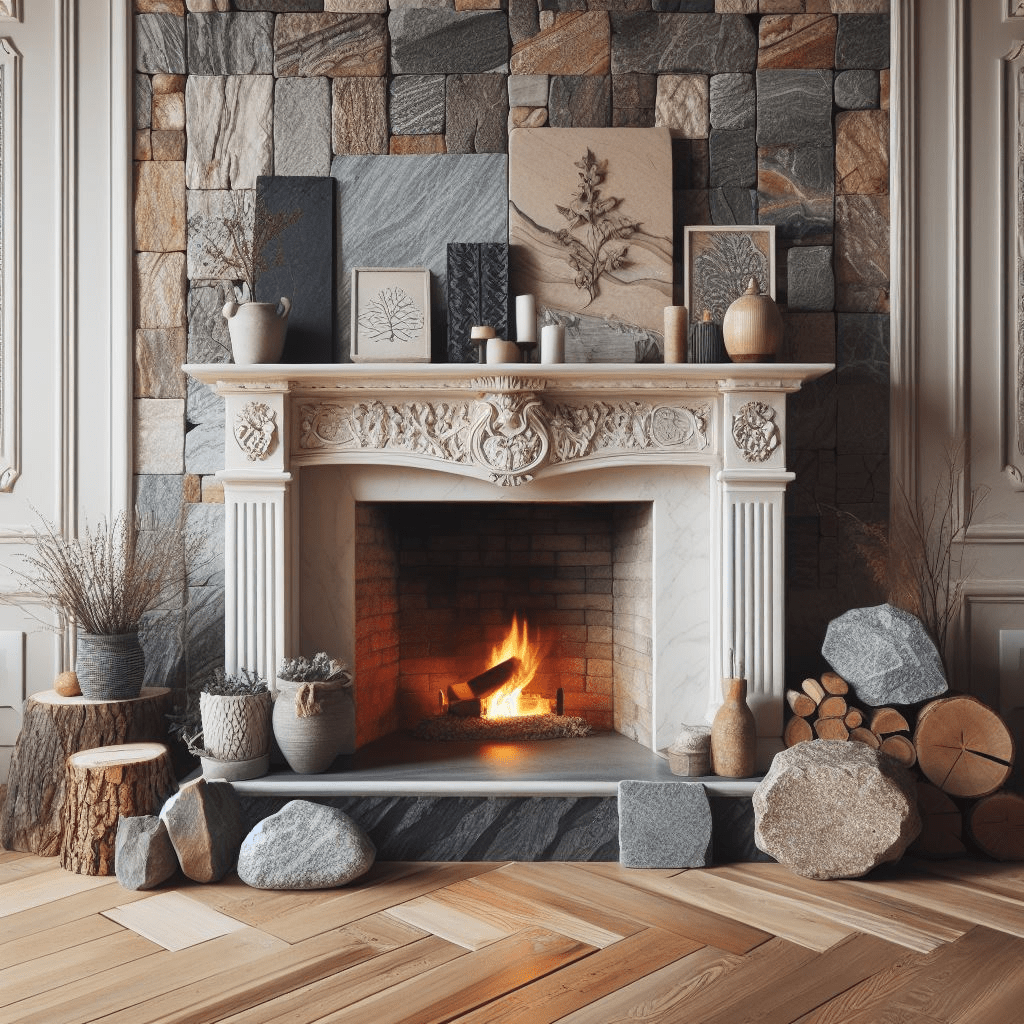
Preparation and Safety
Before diving into the replacement process, it’s essential to ensure the fireplace is ready for the transformation. This involves removing any existing tiles and preparing the surface. Safety precautions, such as wearing protective gear and working in a well-ventilated area, should be prioritized.
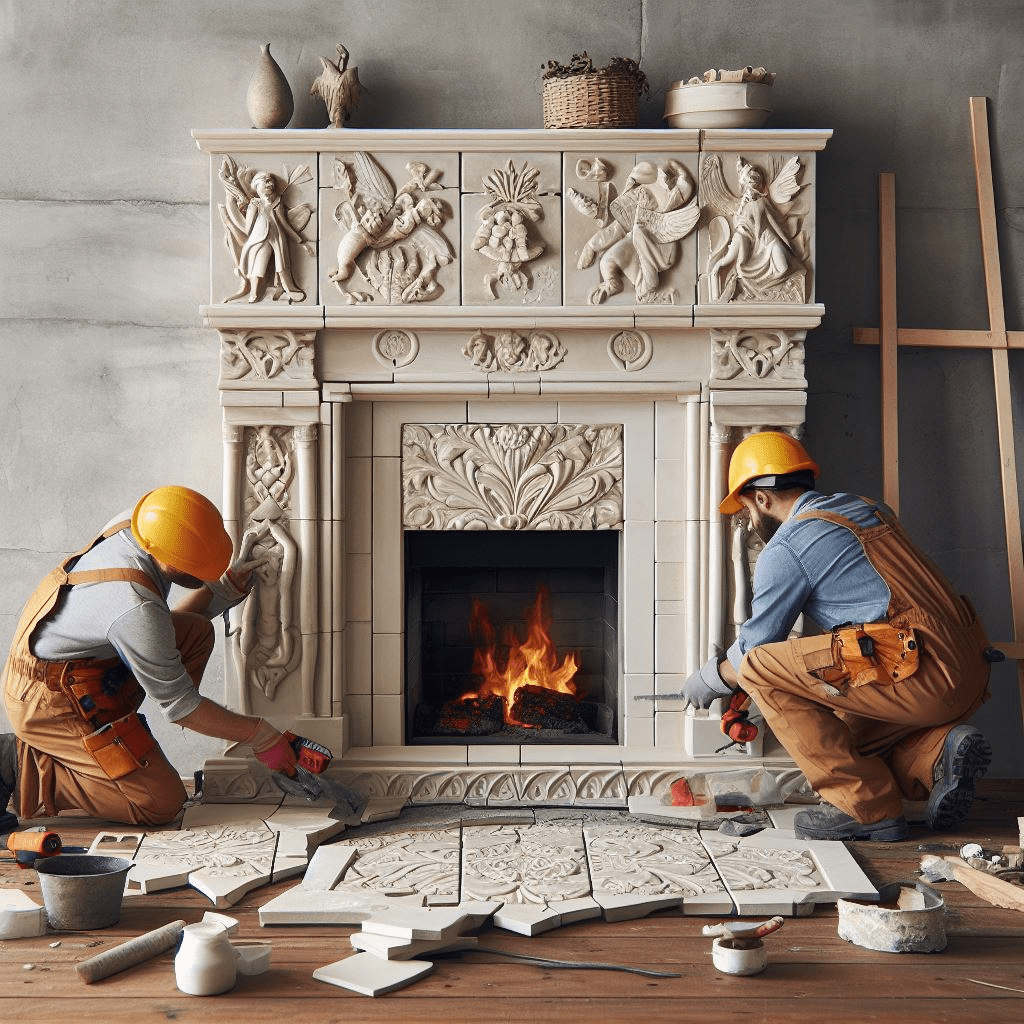
Tools and Materials Needed
A successful fireplace upgrade requires the right tools and materials. From chisels and hammers to adhesives and grout, having the necessary items on hand is crucial.
- Chisels and Hammers
- Use chisels for precise woodwork and hammers for assembly.
- Ensure chisels are sharp for clean cuts.
- Adhesives
- Wood glue for strong and lasting connections.
- Ensure it’s child-safe and non-toxic.
- Grout and Sealant
- For securing joints and ensuring stability.
- Waterproof sealant for longevity.
- Screws and Screwdriver
- Various sizes of screws for different components.
- Powered screwdriver for efficient assembly.
- Measuring Tape
- Accurate measurements for precise fitting.
- Ensure safety by adhering to recommended dimensions.
- Drill and Bits
- Power drill for creating holes.
- Assorted drill bits for various materials.
- Safety Equipment
- Safety goggles and gloves for protection.
- First aid kit for emergencies.
- Paints and Finishes
- Non-toxic paints for color and creativity.
- Clear finishes for added durability.
- Level
- Ensures equipment is straight and level.
- Critical for stability and safety.
- Sandpaper
- Smooth edges and surfaces.
- Ensure child-friendly, fine-grit sandpaper.
- Plywood and Lumber
- Quality, sturdy materials for construction.
- Check for smooth finishes and safety standards.
- Carpenter’s Square
- Ensures accurate angles and corners.
- Essential for precise assembly.
- Allen Wrench Set
- Commonly used in play equipment assembly.
- Ensure a set with various sizes.
- Pencil and Marking Tools
- Marking components for accurate assembly.
- Essential for aligning and positioning.
- Instruction Manual
- Follow manufacturer instructions carefully.
- Clarify any doubts before starting assembly.
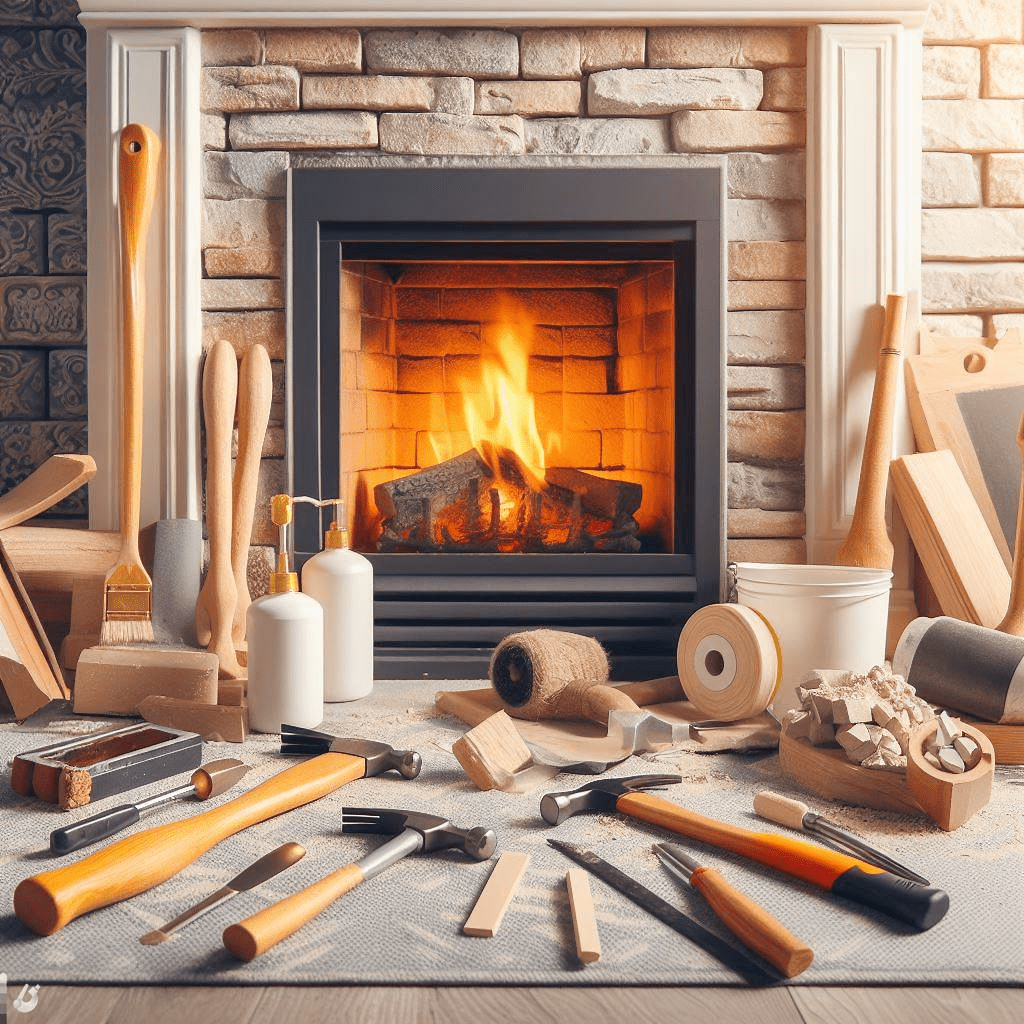
Step-by-Step Guide
A detailed step-by-step guide will walk readers through the entire process, starting with the removal of existing tiles, preparing the surface for new stones, and concluding with the installation, grouting, and finishing touches. Clear instructions and accompanying visuals will make this a manageable DIY project.
Prepare Your Workspace
- Clear the area around the fireplace.
- Protect the floor with a drop cloth to catch debris.
Safety First
- Wear safety goggles and gloves.
- Ensure proper ventilation in the workspace.
Remove Existing Tiles
- Use a hammer and chisel to carefully chip away tiles.
- Start at the edges and work towards the center.
- Dispose of broken tiles safely.
Clean the Surface
- Remove any adhesive or grout residue.
- Vacuum or wipe the surface clean.
Inspect the Substrate
- Ensure the substrate (fireplace base) is in good condition.
- Make any necessary repairs.
Apply a Bonding Primer
- Use a bonding primer to enhance adhesion.
- Follow the manufacturer’s instructions.
Layout Design
- Dry-fit the stones to plan the layout.
- Adjust as needed to achieve the desired look.
Cut Stones to Fit
- Use a wet saw or tile cutter to make precise cuts.
- Ensure stones fit snugly around the fireplace and edges.
Mix Mortar
- Follow the mortar manufacturer’s instructions.
- Achieve a consistency similar to peanut butter.
Spread Mortar
- Apply mortar in small sections using a notched trowel.
- Work in manageable areas to prevent drying.
Lay Stones
- Press stones into the mortar, starting from the center.
- Wiggle stones slightly to ensure a good bond.
Grouting
- Once stones are set, mix and apply grout.
- Use a rubber float to press grout into gaps.
Clean Excess Grout
- Wipe away excess grout with a damp sponge.
- Clean as you go to avoid dried grout stains.
Finishing Touches
- Seal stones if necessary for added protection.
- Clean the entire surface for a polished look.
Final Inspection
- Check for any uneven stones or grout lines.
- Make adjustments as needed.
Let it Cure
Allow the installation to cure according to the mortar and grout instructions.
Enjoy Your Stone Fireplace
Admire the transformed fireplace and the new focal point of your living space.

Cost Considerations
Comparing the cost of tiles to stones is a key consideration. While stones may initially seem more expensive, the long-term benefits often outweigh the investment. We will explore budget-friendly stone options without compromising quality.
- Faux Stone Panels
- Opt for high-quality faux stone panels that mimic the appearance of solid stone. They are affordable and easy to install.
- Concrete
- Consider concrete as a budget-friendly alternative. With various finishes and textures available, it can emulate the look of more expensive stones.
- Engineered Stone
- Engineered stone, like quartz, provides durability and a luxurious appearance at a more affordable price compared to natural stones like marble.
- Stone Veneer
- Stone veneer is a thin layer of natural stone that can be applied to surfaces. It offers the aesthetic of real stone without the hefty price tag.
- Budget-Friendly Patio Stones
- Explore budget-friendly patio stones for outdoor spaces. These stones come in various colors and patterns, adding charm without breaking the bank.
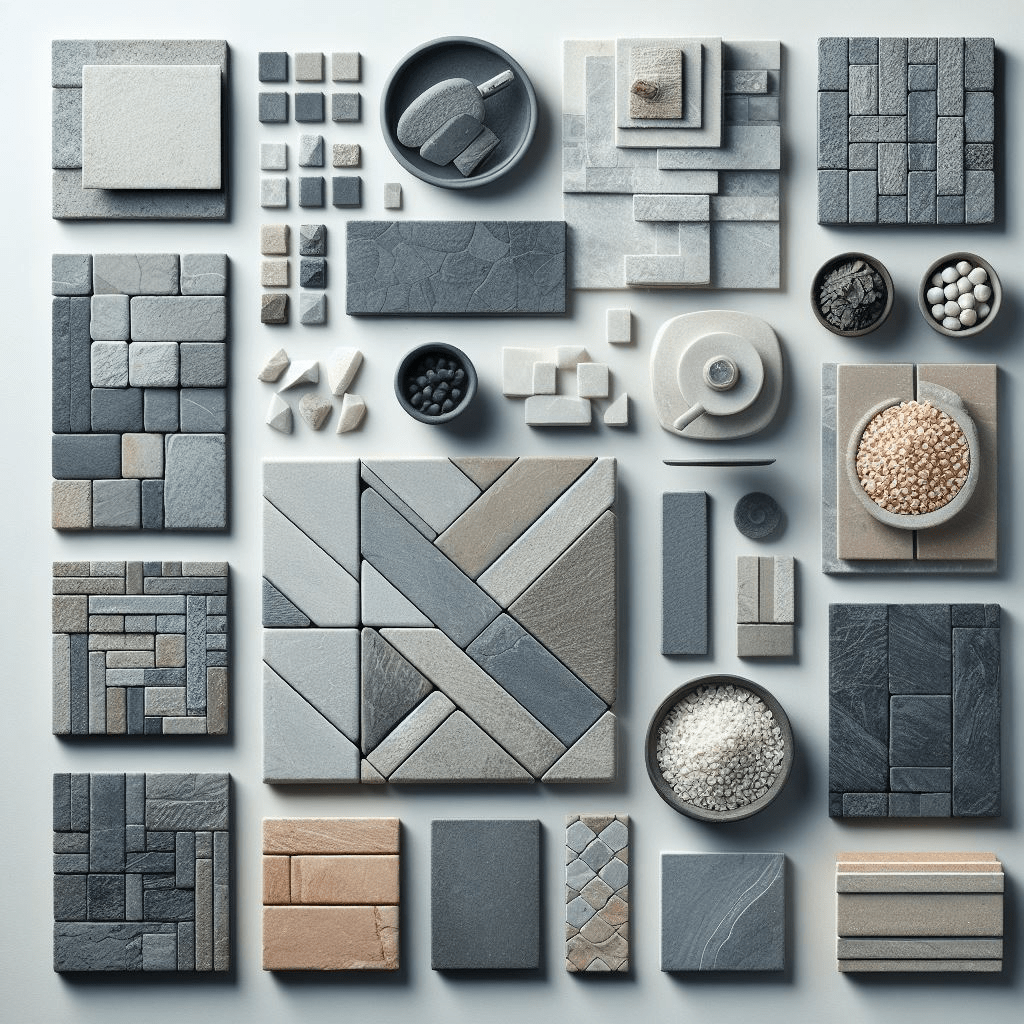
DIY vs. Hiring Professionals
Readers will weigh the pros and cons of a do-it-yourself approach versus hiring professionals for the job. Factors such as skill level, time constraints, and the complexity of the project will be discussed to help readers make an informed decision.
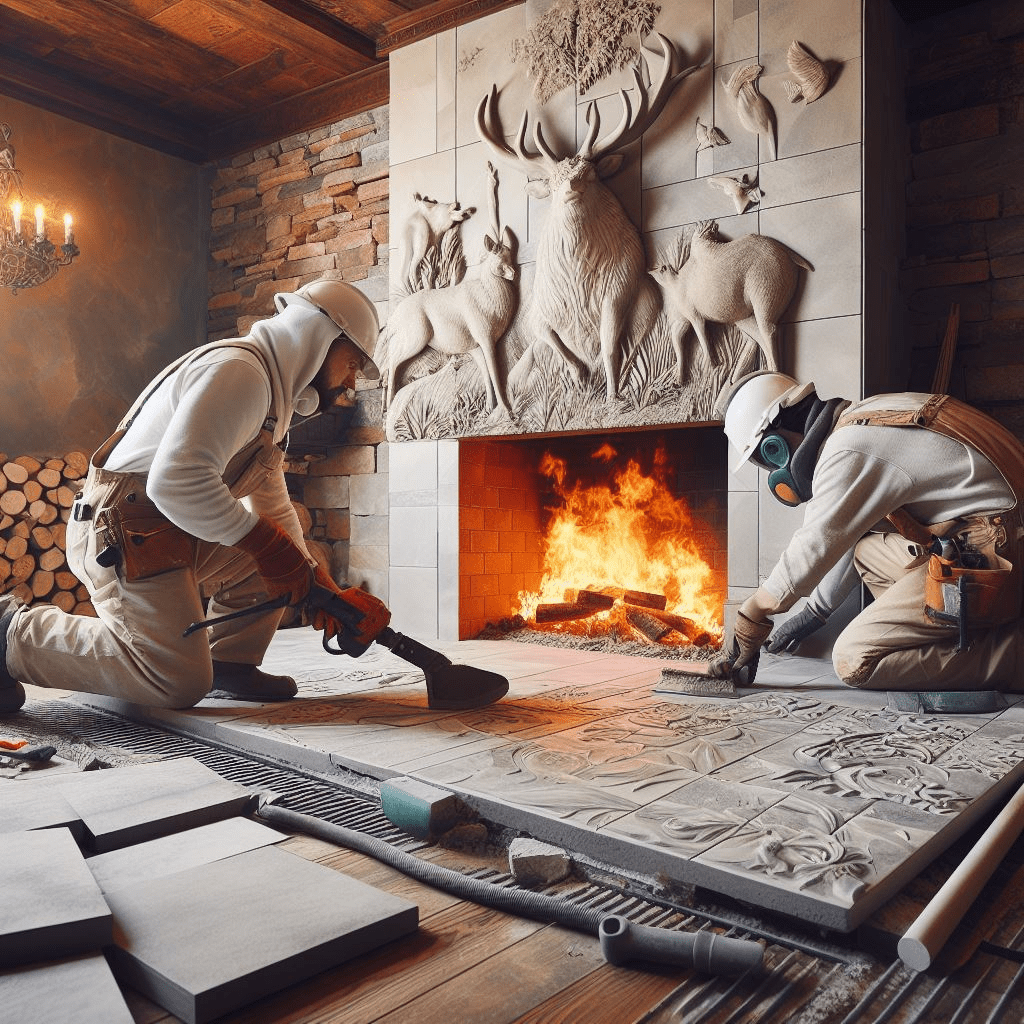
Maintenance Tips
Maintaining the beauty of a stone fireplace is essential for long-lasting appeal. we will provide practical tips on cleaning and preserving the natural characteristics of the stones, ensuring they remain a stunning focal point.
- Gentle Cleaning Solutions
- Use mild, pH-neutral cleaners designed for natural stone.
- Avoid acidic or abrasive cleaners, such as vinegar or harsh chemicals, to prevent damage to the stone’s surface.
- Regular Dusting and Sweeping
- Dust and sweep surfaces regularly to remove dirt and debris.
- Abrasive particles can scratch the stone over time, impacting its luster and finish.
- Immediate Stain Removal
- Act promptly to clean spills to prevent staining.
- Blot liquids with a soft, clean cloth and use a stone-safe cleaner for stubborn stains.
- Sealing for Protection
- Apply a high-quality stone sealer to protect against stains.
- The frequency of sealing depends on the type of stone; consult with a professional if unsure about the appropriate schedule.
- Avoid Heat and Impact
- Protect natural stone from extreme temperatures and impacts.
- Use coasters for hot items and avoid dropping heavy objects on the surface to prevent cracks or damage.
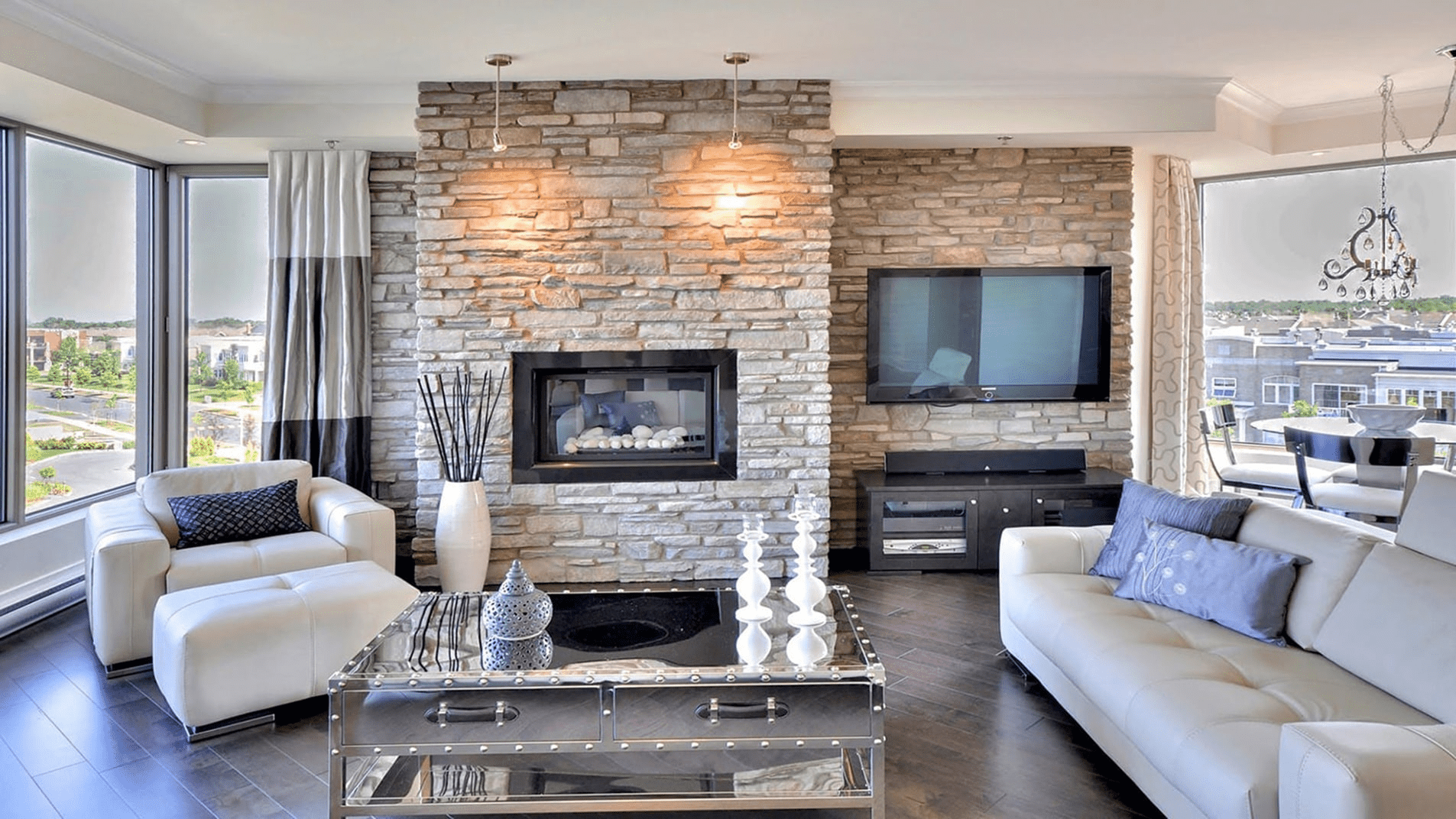
Before and After Showcase
Visual inspiration is a powerful motivator. Find Some stunning before-and-after images of successful tile-to-stone fireplace transformations, offering readers a glimpse into the potential design possibilities.
Common Challenges and Solutions
Anticipating and addressing common challenges that may arise during the replacement process is crucial. Whether it’s uneven surfaces or unexpected issues with the existing structure, we will provide practical solutions for a smooth project.
- Thorough Site Assessment
- Conduct a comprehensive site assessment before initiating the project.
- Identify and document potential challenges, including uneven surfaces or structural issues, to develop tailored solutions.
- Engage Experienced Professionals
- Hire experienced professionals, such as engineers and architects, who can provide insights into handling structural challenges.
- Their expertise can help in designing solutions that accommodate uneven surfaces and address unexpected issues efficiently.
- Flexible Project Planning
- Adopt a flexible project plan that allows for adjustments based on unforeseen challenges.
- Include contingency timelines and budgets to account for unexpected delays or additional work required.
- Utilize Advanced Technologies
- Leverage technologies like 3D modeling and simulation to anticipate and plan for potential structural issues.
- This proactive approach enhances precision in project execution and minimizes the impact of unforeseen challenges.
- Collaborative Problem-Solving
- Foster open communication and collaboration among project team members.
- Encourage regular project updates and discussions to collectively address challenges, ensuring a unified and efficient problem-solving approach.
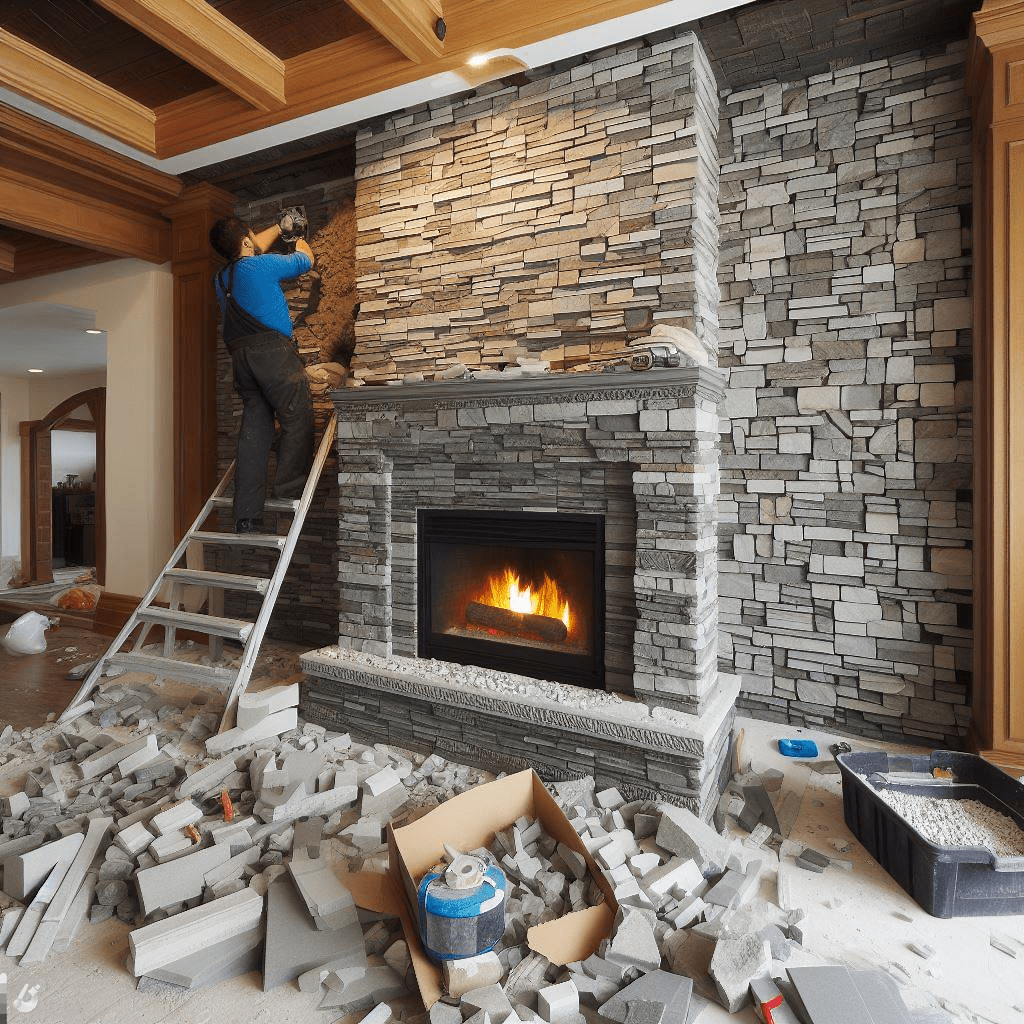
In conclusion, replacing tiles around the fireplace with stones that extend to the ceiling is a transformative and visually stunning upgrade. The article has covered the benefits of choosing stones, the preparation and safety measures required, a step-by-step guide, cost considerations, and more. Whether readers opt for a DIY approach or hire professionals, this upgrade promises to redefine the aesthetics of their living space.
FAQs
Is this a project suitable for beginners?
Yes, with the right tools and guidance, this can be a manageable DIY project.
What is the cost difference between tiles and stones?
While stones may have a higher upfront cost, their durability often makes them a cost-effective choice in the long run.
Can any type of stone be used for this project?
Yes, various stones like marble, granite, or faux stones can be used, depending on personal preferences and budget.
How do I maintain a stone fireplace?
Regular cleaning with a mild detergent and avoiding abrasive cleaners will help preserve the natural beauty of the stones.
Is it necessary to hire professionals for this project?
It depends on individual skill levels and the complexity of the project. Professionals ensure a precise and efficient installation.
Can you put stone over a tile fireplace?
Yes, it’s possible to install stone veneer over a tile fireplace. Ensure proper preparation and use a suitable adhesive for the stone .
How do you reface a fireplace?
Refacing a fireplace involves covering the existing finish material with a substitute like stone, tile, or other materials. Properly prepare the surface, choose suitable materials, and follow a step-by-step process for a successful refacing .
Can you change the tiles on a fireplace?
Yes, you can change the tiles on a fireplace. Remove the existing tiles carefully and replace them with the desired ones, ensuring they meet safety and aesthetic requirements .
Can you remove tile from fireplace hearth?
Yes, tiles can be removed from a fireplace hearth. Use appropriate tools to carefully pry and remove the tiles. Ensure safety precautions and proper surface preparation for any new finish.
